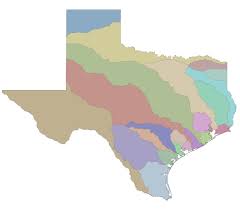The Beauty and Importance of Rivers
Rivers are majestic natural wonders that have played a vital role in shaping landscapes, supporting ecosystems, and sustaining human civilizations for centuries. From the mighty Amazon to the winding Nile, rivers hold a special place in our world.
One of the most remarkable aspects of rivers is their ability to nurture diverse ecosystems. Along their banks, rich vegetation thrives, providing habitats for countless species of plants and animals. Fish swim in their waters, birds flock to their shores, and mammals rely on them for sustenance.
Moreover, rivers serve as essential sources of water for agriculture, industry, and human consumption. They irrigate fields, generate hydroelectric power, and facilitate transportation of goods and people. Without rivers, many regions would struggle to meet their water needs and sustain their economies.
Besides their practical significance, rivers also hold immense cultural and spiritual value. Throughout history, rivers have been revered as sacred entities by various cultures around the world. They feature prominently in myths, legends, and religious practices, symbolizing life, renewal, and connectivity.
However, despite their importance, rivers face numerous threats today. Pollution from industrial runoff, agricultural chemicals, and plastic waste poses a significant risk to river ecosystems. Dams disrupt natural flow patterns and can harm migratory fish populations. Climate change exacerbates these challenges by altering river levels and temperatures.
It is crucial that we recognize the value of rivers and take steps to protect them for future generations. Conservation efforts such as watershed management, pollution control measures, and sustainable water usage practices are essential in safeguarding these vital lifelines.
In conclusion, rivers are not just bodies of water; they are lifelines that sustain life on Earth. By appreciating their beauty and understanding their significance, we can work together to ensure that rivers continue to flow freely for years to come.
Top FAQs About Rivers: Sizes, Types, and Key Locations
- What is the largest river in FL?
- What are the main types of rivers?
- What are the seven most important rivers?
- Where are the five major rivers?
- What are the 3 types of rivers?
What is the largest river in FL?
The frequently asked question “What is the largest river in FL?” often refers to the St. Johns River, which is the longest river in Florida. Spanning approximately 310 miles, the St. Johns River flows northward, making it unique compared to most rivers in North America that flow south. The river plays a significant role in Florida’s ecosystem, supporting diverse wildlife and providing recreational opportunities for residents and visitors alike. Its scenic beauty and historical importance make the St. Johns River a cherished natural resource in the Sunshine State.
What are the main types of rivers?
Rivers can be classified into several main types based on their characteristics and flow patterns. One common categorization is based on their origin, such as glacier-fed rivers that originate from melting ice, or rain-fed rivers that rely on precipitation for their flow. Additionally, rivers can be classified by their size and shape, with categories like meandering rivers that follow a winding path, braided rivers with multiple interconnected channels, or straight rivers that flow in a linear fashion. Understanding the different types of rivers helps us appreciate the diversity and complexity of these vital waterways and the unique ecosystems they support.
What are the seven most important rivers?
The question “What are the seven most important rivers?” often arises in discussions about geography and environmental significance. While opinions may vary, several rivers are commonly regarded as crucial due to their historical, ecological, and economic importance. Among these notable rivers are the Nile in Africa, known for its role in ancient civilizations; the Amazon in South America, recognized for its vast biodiversity; the Yangtze in China, vital for agriculture and transportation; the Mississippi-Missouri in North America, a key waterway for trade; the Ganges in India, revered for its spiritual significance; the Danube in Europe, connecting multiple countries; and the Mekong in Southeast Asia, supporting millions of livelihoods. These rivers play integral roles in shaping landscapes, sustaining ecosystems, and influencing human societies worldwide.
Where are the five major rivers?
The five major rivers in the world are the Amazon in South America, the Nile in Africa, the Yangtze in China, the Mississippi-Missouri in North America, and the Yenisei-Angara-Selenga in Russia. These rivers are not only significant in terms of their length and discharge but also play crucial roles in supporting ecosystems, providing water resources, and shaping the landscapes of their respective regions. Their importance extends beyond geographical boundaries, impacting environmental sustainability and human livelihoods on a global scale.
What are the 3 types of rivers?
There are three main types of rivers classified based on their flow patterns and origins. The first type is known as an “intermittent river,” which only flows during certain times of the year, typically in response to seasonal rainfall or snowmelt. The second type is a “perennial river,” which flows continuously throughout the year due to a steady water supply from various sources such as springs, glaciers, or lakes. Lastly, there are “ephemeral rivers,” which flow sporadically in response to sudden rainfall events but may remain dry for extended periods. Each type of river plays a unique role in shaping landscapes and supporting ecosystems around the world.

